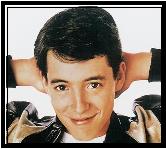Nobel Prize Time
Wow, more than a week since my last post. Sometimes, it's hard to find time even to sleep or grade papers.
If nothing else, I have to say I am always excited by the awarding of the Nobel Prizes. Isn't everyone? I have been called a geek for much less, I assure you.
Early in the schoolyear, we always have to talk to science students about the precision of our lab equipment (or lack thereof). How accurate are the scales, meter sticks, etc? What uncertainty will this create in your measurements? How many significant figures do you have in this measurement?
Conveniently, we can refer back to these conversations when discussing this year's Nobel Prize winning research:
If nothing else, I have to say I am always excited by the awarding of the Nobel Prizes. Isn't everyone? I have been called a geek for much less, I assure you.
Early in the schoolyear, we always have to talk to science students about the precision of our lab equipment (or lack thereof). How accurate are the scales, meter sticks, etc? What uncertainty will this create in your measurements? How many significant figures do you have in this measurement?
Conveniently, we can refer back to these conversations when discussing this year's Nobel Prize winning research:
The Royal Swedish Academy of Sciences awarded the prize to Roy Glauber, John Hall and Germany's Theodor Haensch for studying light and harnessing lasers to create a "measuring stick" to gauge frequencies with extreme precision.
"We get most of our knowledge of the world around us through light," said the Academy, calling optics "the physicists' tool for dealing with light phenomena."
The winning trio's research answered such questions as how candle light differs from laser beams in a CD player and how light can measure time more accurately than an atomic clock.
"All three of them deserve the prize," said Peter Rodgers, editor of Physics World magazine. "The general area of quantum optics and lasers is an area in which there has been a lot of progress in recent years. This prize reflects well on progress in that area."
Haensch used even-spaced laser pulses "like the teeth of a comb or the marks on a ruler" to determine the value of frequencies and Hall refined this technique.
"One of the best applications is to test whether what we teach in physics is true or just approximately true," he said.



0 Comments:
Post a Comment
<< Home